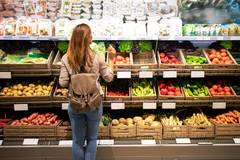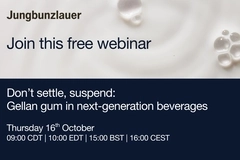Scientists develop “microbial map” revealing human and climate impacts on food systems
A team of researchers across Europe has created a “map of agri-food system microbiomes” showing how microbes underpin food systems. However, these vital microbial networks are collapsing — driven by processed diets, climate change, intensive farming, and antibiotic overuse — calling for urgent, system-wide action to restore them.
The impacts are seen in an uptick of antimicrobial resistance (AMR), crop failures, food spoilage, and loss of human gut and soil microbes.
The map includes webs of “trillions of bacteria, fungi, viruses, and the connections between them,” and captures the “hidden links” between food, our bodies, and the planet, note the authors.
To capture the whole system, the authors combined findings from over 250 omics studies on microbial interactions in horticulture, silviculture, livestock farming, and aquatic environments.
“After studying the microbiomes of individual environments within food systems over recent years, the scientific community now has enough data to look more closely at how the microbes within these different environments are linked,” senior author Paul Cotter and head of Food Biosciences at Teagasc Food Research Centre, which conducted the study with APC Microbiome, Ireland, tells Food Ingredients First. They have also studied how changes in one set of microbiomes can affect others.

This knowledge of microbiomes can be harnessed to “enhance crop resilience and productivity, improve animal health and performance,” and refine management practices in fishing and aquaculture, he explains. It can also be used to prolong food shelf life and reduce food spoilage during distribution.
Restoring global food systems
The study, published in Frontiers in Science, highlights several ways microbiome-based solutions can strengthen the food production system. These include using microbes to protect crops from salt, drought, and pathogens, and planting clover to enrich soil nitrogen.
 Microbiome insights can boost crop resilience, improve animal health, optimize aquaculture, and extend food shelf life, says Cotter.Cotter says the team emphasizes using bacteria to produce higher quality animal feed, supplementing animal diets with probiotics to improve health, and “reducing food waste by applying cultures that prolong shelf life.”
Microbiome insights can boost crop resilience, improve animal health, optimize aquaculture, and extend food shelf life, says Cotter.Cotter says the team emphasizes using bacteria to produce higher quality animal feed, supplementing animal diets with probiotics to improve health, and “reducing food waste by applying cultures that prolong shelf life.”
“All of the above are being advanced at a remarkable pace, with several real-world examples already existing. My research group is particularly interested in the microbes present in fermented foods, determining if they survive in the gut after consumption and, if so, what positive impacts they can have on health.”
Cotter adds that some of these approaches, such as yeast reducing post-harvest decay in strawberries, are already in use. “Similarly, bacteria can help desert crops become more resilient to environmental stress. Strengthening microbiomes may also help to reduce antibiotic use in livestock, limiting the spread of resistance.”
Calls for collaboration
The authors point to climate change and human activity, including the overuse of antibiotics and pesticides, as a contributing factor in disrupting microbiome dynamics.
Excessive fertilizer use can damage aquatic microbiomes, while antibiotic use in fish farming raises AMR risks. Pollutants such as medicines, pesticides, and fertilizers further worsen the problem.
The team urges collaboration between consumers, industry, regulators, educators, and scientists to restore microbial networks.
“There are still some microbiomes that require further investigation, and so new research/funding may be needed,” underscores Cotter. “In other instances, the data and potential solutions are available; however, implementing these practices will require food producers and distributors to implement microbiome-friendly solutions for farming, fishing, and food production and distribution.”
 The authors link microbial decline to processed diets, climate change, and intensive farming.Enforcing these practices will require consumers to opt for healthy, minimally processed foods, and continuous advancements in microbiome research, he adds.
The authors link microbial decline to processed diets, climate change, and intensive farming.Enforcing these practices will require consumers to opt for healthy, minimally processed foods, and continuous advancements in microbiome research, he adds.
Meanwhile, evidence-based regulatory frameworks and scientists advancing knowledge through experiments and omics-based research are also needed.
Toward a microbe-friendly future
Cotter hopes to see microbe-friendly solutions move away from the use of chemicals (pesticides, preservatives) to microbiome-based solutions that “directly involve the use of microbes and microbiomes, or indirectly involve the use of nutrients that select for desirable microbes and microbiomes.”
Meanwhile, the team continues to work on harnessing individual microbes and microbial communities from all environments. This will lead to “beneficial impacts on animal, human, and planetary health,” he concludes.















